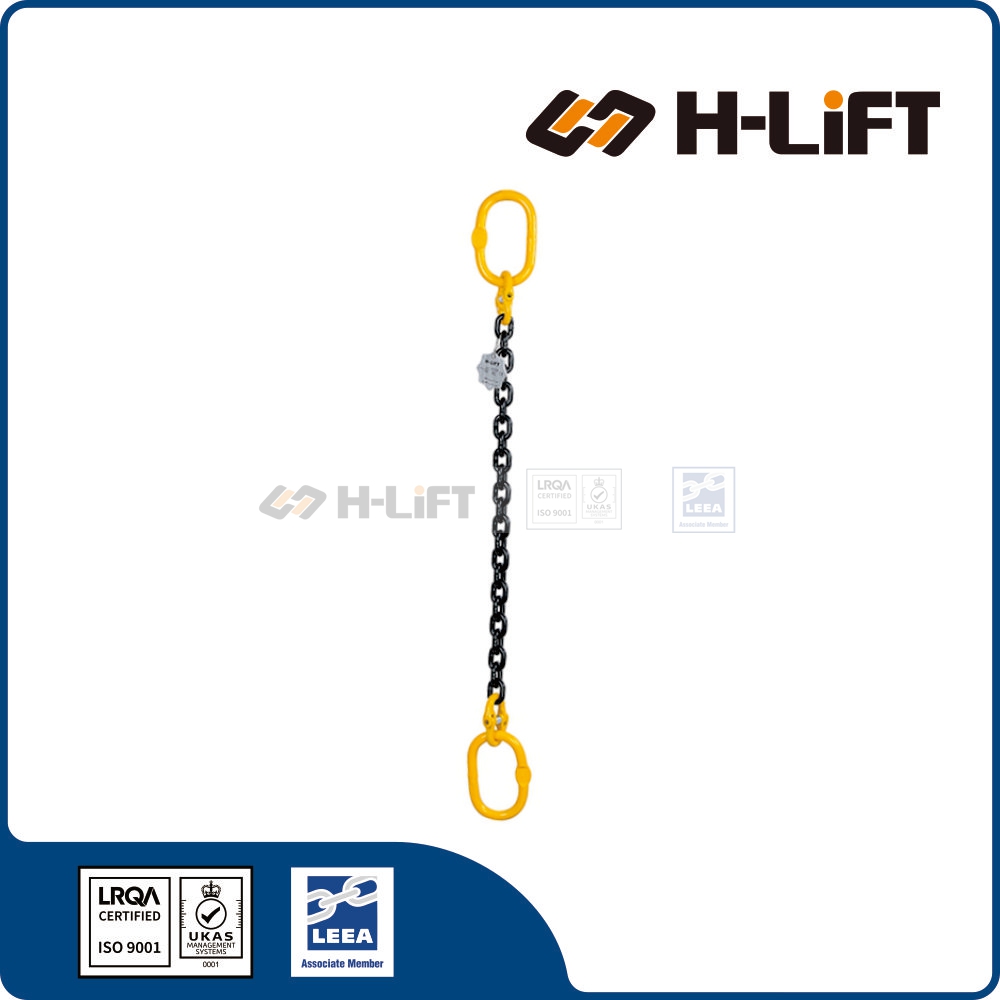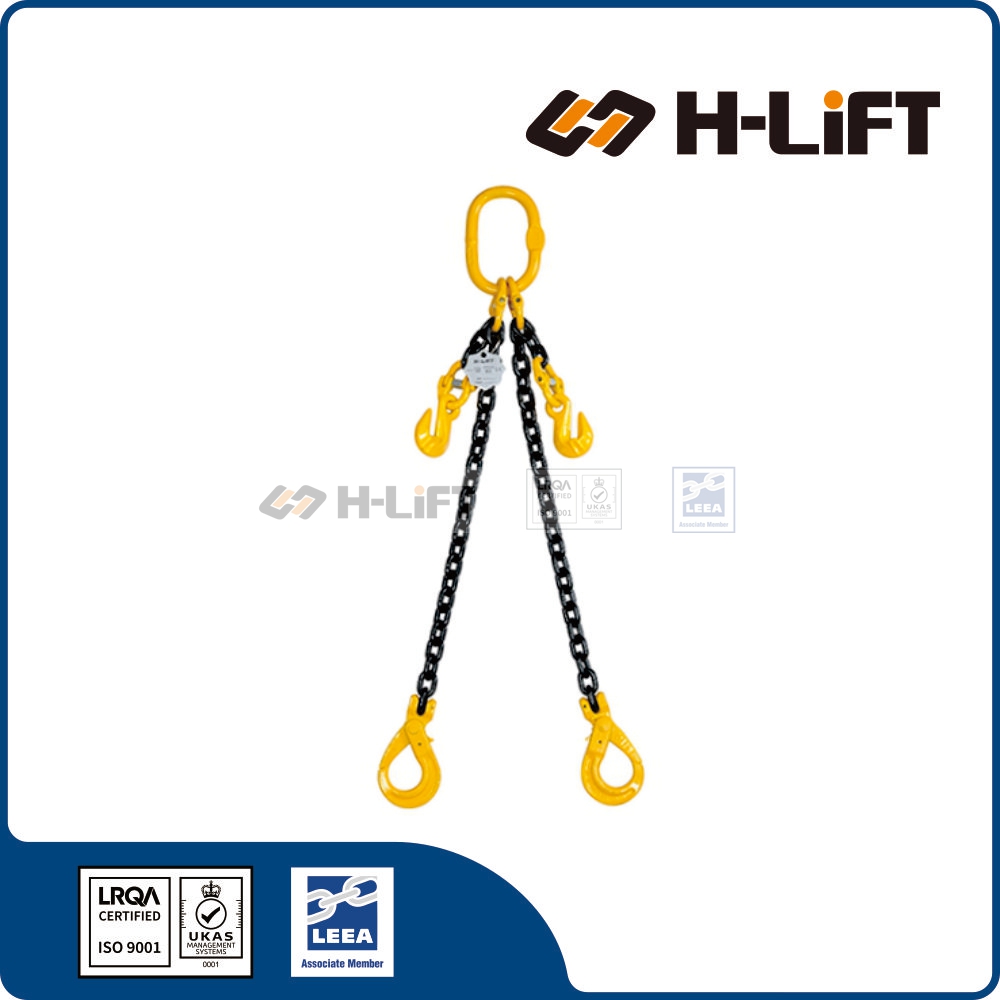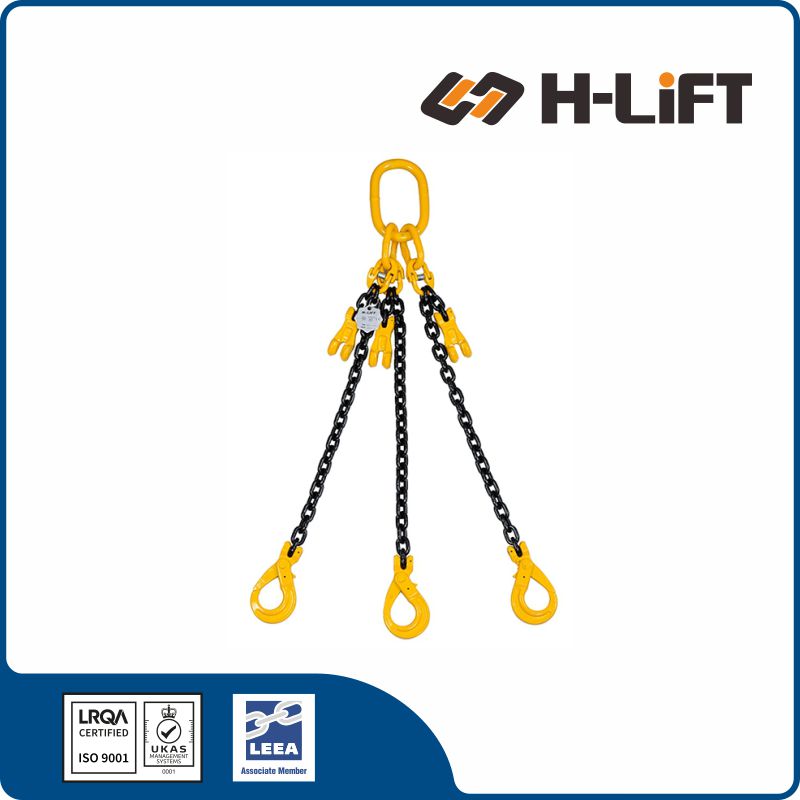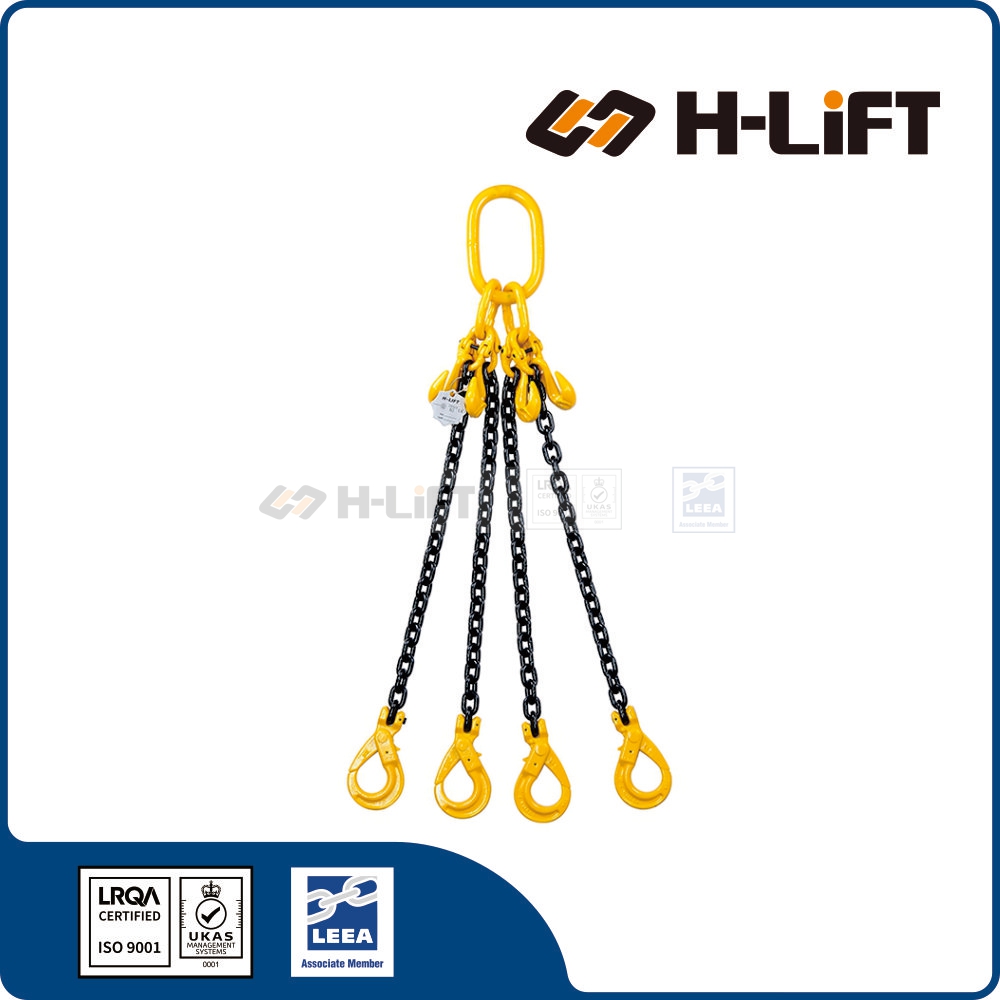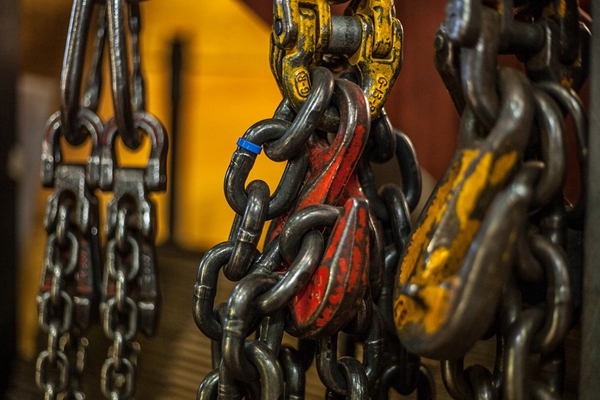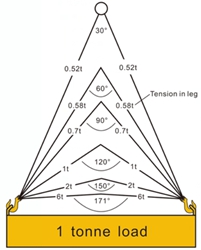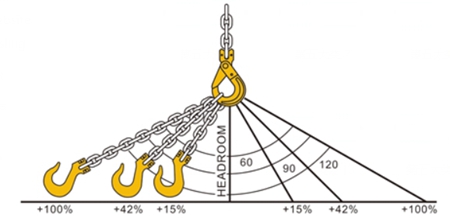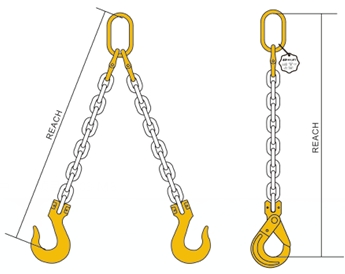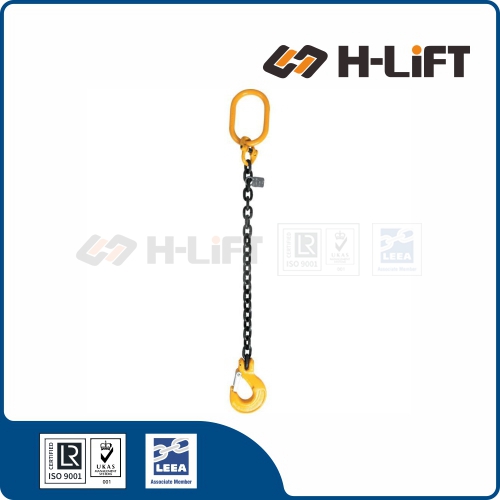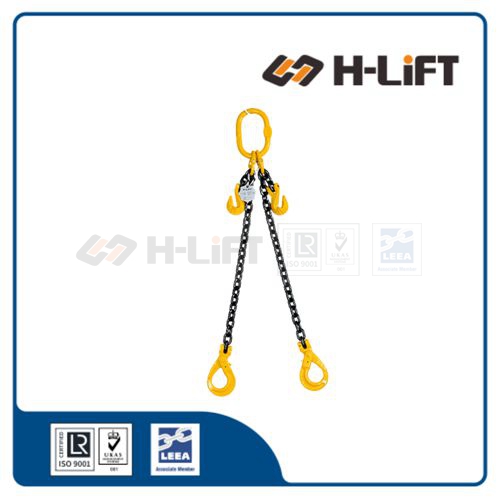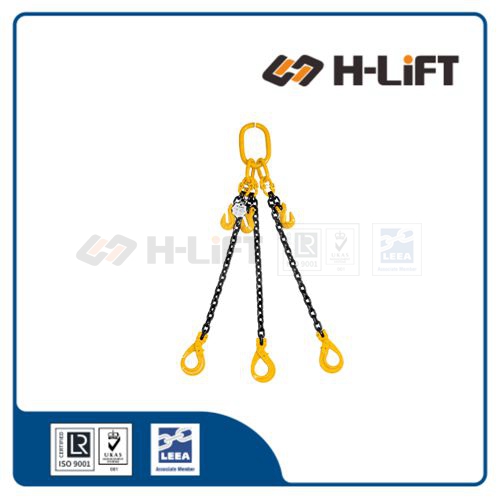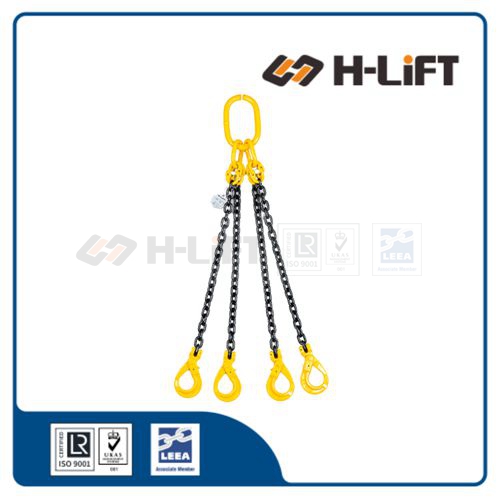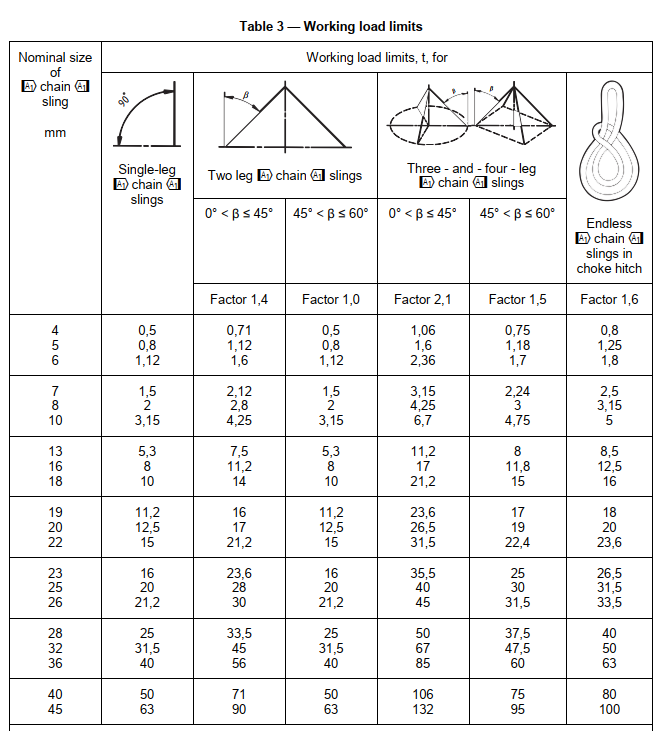ALWAYS:
• Store and handle chain slings correctly.
• Inspect chain slings and accessories before use and before placing into storage.
• Follow safe slinging practices, as given overleaf.
• Fit slings carefully, protect them from sharp edges and position hooks to face outward from the load.
• Apply the correct mode factor for the slinging arrangement.
• Back hook free legs onto the master link.
NEVER:
• Attempt to shorten a sling leg other than by means of an integral chain clutch.
• Force, hammer or wedge chain slings or their fittings into position.
• Lift on the point of a hook.
• Expose chain slings to chemicals, particularly acidic conditions, without consulting the supplier.
• Use chain slings at temperatures above 200°C or below minus 40°C without consulting the supplier.
• Shock load chain slings.
Selecting the Correct Sling
Chain slings are available in a range of material grades, sizes and assemblies. Select the slings to be used and plan the lift taking the following into account:
Type of sling to be used - endless, single, two, three or four leg.
Capacity - the sling must be both long enough and strong enough for the load and the slinging method.
Apply the mode factor for the slinging method.
If adjustment of the leg length is necessary select a sling with chain shortening clutches.
For use at temperatures exceeding 200°C or below minus 40°C refer to the suppliers instructions.
Where slings may come into contact with chemicals, particularly acids or acidic fumes, consult the supplier.
In the case of multi-leg slings the angle between the legs should not be less than 30° or exceed the maximum marked.
Multi-leg slings exert a gripping force on the load which increases as the angle between the legs increases and this must be taken into account.
Storing and Handling Chain Slings
Never return damaged or contaminated slings to storage. They should be dry, clean and protected from corrosion.
Store chain slings on a rack and not lying on the ground. The storage area should be dry, clean and free of any contaminates which may harm the sling.
Do not alter, modify or repair a chain sling but refer such matters to a Competent Person.
Never galvanise or subject a chain sling to any other plating process without the express approval of the supplier.
Using Chain Slings Safely
Do not attempt lifting operations unless you understand the use of the equipment, the slinging procedures and the mode factors to be applied.
Do not use defective slings or accessories.
Do not force, hammer or wedge chain slings or fittings into position; they must fit freely. Check the correct engagement of fittings and appliances.
Position hooks of multi-leg slings facing outward from the load. Do not lift on the point of the hook and ensure that the chain is not twisted or knotted.
Back hook free legs to the master link to avoid lashing legs which might accidentally become engaged or otherwise become a hazard.
Take the load steadily and avoid shock loads.
Do not leave suspended loads unattended. In an emergency cordon off the area.
In-service Inspection and Maintenance
Maintenance requirements are minimal. Keep chain slings clean and protect from corrosion.
Regularly inspect chain slings and, in the event of the following defects, refer the sling to a Competent Person for thorough examination: illegible markings; distortion of fittings; worn, stretched, bent or twisted links; ineffective safety catches; cuts, nicks, gouges, cracks, corrosion, heat discolouration or any other defect apparent to the chain or fittings.







